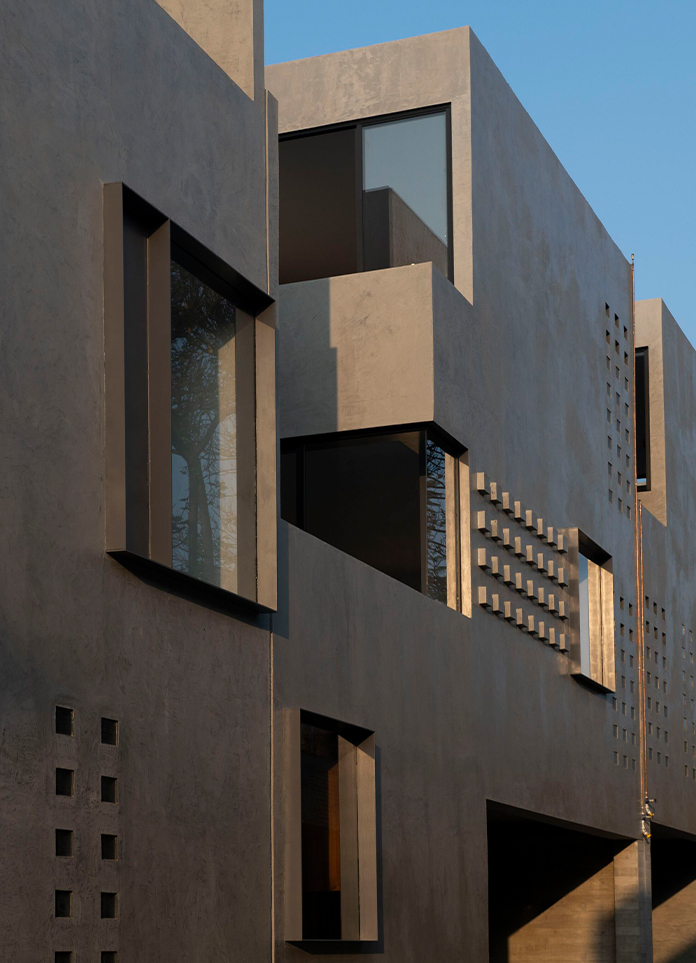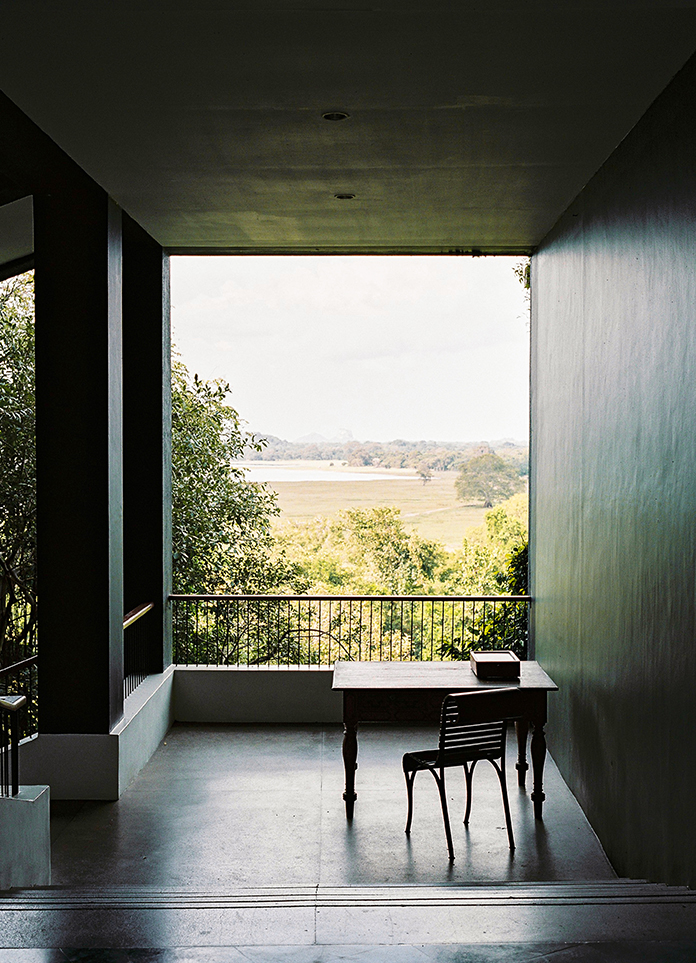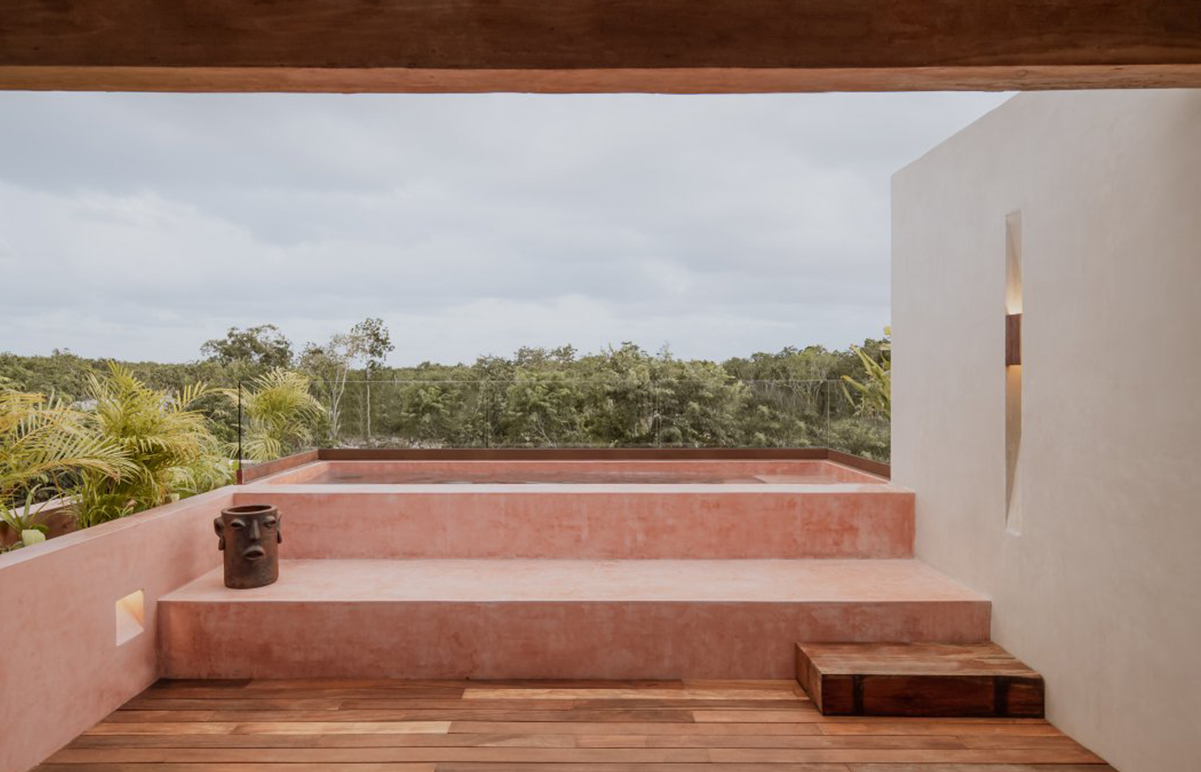
A storage facility for archiving furniture, products, and artwork in Miyota-machi, Nagano Prefecture, with a guesthouse attached. Located in a quiet and nature-rich environment where streams weave through a thick forest of red pine, the tunnel-like architecture took shape through a combination of precast and prestressed construction methods.
For precast construction, common parts are molded in a factory and assembled on site. An example of its applications in infrastructure projects is the box culvert (box-shaped concrete structures), used to store waterways, pathways, power lines, and communication lines buried underground. However, since the method itself does not provide a leak-free composition nor does it allow for stacking, both necessary for this architecture, prestressing was also used to connect the parts together.
The prestressing method is a technique used in civil engineering structures such as bridges, in which the parts are aligned and then tightened with wires to connect them. This results in a seamless and smooth surface finish, obtaining a tight seal, and durability.
The common square-shaped parts weigh approximately 12 tons each, and a total of 63 of these parts were used. The size of the parts was derived from the loading size of the delivery truck and the weight that could be lifted by a crane. The 45-degree reinforcement at the entry corner, which is also found in general box culverts, serves as a brace and enhances earthquake resistance. By connecting these parts, a slender, tunnel-shaped space with an internal dimension of approximately 2 x 2.3 m was created. Fourteen wires were used to connect each “tunnel” and care was taken to apply uniform tension to each wire at all times. The work involved gradually tightening the wires over time until a tension of 46 tons was finally applied to each.
The building is composed of four stacked “tunnels” covered with a roof in the center. In addition to a long, narrow storage room with a depth of approximately 40 meters, there are two smaller storage rooms, but it is envisioned that more will be added to the site in the future as the collection grows. The kitchen, bathroom, toilet, and other water facilities are concentrated on the first floor, and a compact bedroom and a study are located on the second floor.
- Architect: Nendo
- Photos: Daici Ano Takumi Ota Toru Shiomi
- Words: Gina



























